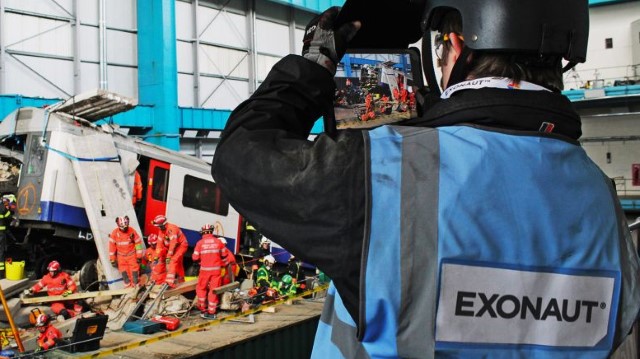Background: With the continued spread of highly contagious COVID strains, governments were faced with the task of safely rolling out a vaccine programme to citizens without knowing exactly how much vaccine they would receive and when.
Challenge: Develop a reliable tool to support potential changes in the vaccination programme based on vaccine availability, demographics, vulnerable citizens, staffing and logistics.
Solution: The forecasting analysis model enables organisations to predict future outcomes of an activity or event across multiple scenarios.
Benefits: Different scenarios can be discussed based on reliable data and critical decisions can be made and acted upon in a timely manner. The reasoning behind critical decisions can be shared and easily understood by others.
About: The forecasting was delivered to regional counties across Sweden.Today, we can look back at some of the pandemic milestones and analyse how the decisions taken impacted society and why. Mid crisis, however, using the available data to make key decisions has had a big impact on how different countries faired – often with very different strategies and outcomes.
In spring of 2021, as Covid vaccinations were being manufactured and shipped throughout the world, 4C analysed the current situation on behalf of regional counties. The goal was to help them analyse the proposed vaccination programme and forecast when the Swedish population would be fully vaccinated based on different potential outcomes as vaccine shipments were subject to change.
Long-term pandemic support
“We have supported many government agencies and municipalities with their responses throughout the pandemic with everything from command and control to strategy development to crisis communication,” says Klas Lindström, 4C Deputy CEO and Crisis Management Expert. “Once the vaccines had been tested and mass production had begun, we wanted to get a better understanding of what that could mean for Sweden and its population, and in doing so provide data to support better decision making. What we didn’t know at that time was that we would continue to do to this as new waves and new variants would add new challenges to vaccine programmes”
Forecasting analysis model
Klas and his team developed a forecasting analysis model using a broad range of data including the number of COVID related cases, hospital admissions, ICU patients and deaths in Sweden and neighbouring countries along with the expected vaccine supply to the country. This formed the foundation for forecasting potential outcomes.
“When forecasting, there were a number of unknowns, such as the actual amounts of vaccine that Sweden would receive and the dates of delivery,” he continues. “This is typical of any crisis, you don’t have all the facts, but sitting and waiting for information isn’t the answer. You must work with what you’ve got, which is why we explored three potential scenarios – best case, worst case and somewhere in between. Once you know this, you can start planning your next move.”
“When forecasting, you don’t have all the facts, but sitting and waiting for information isn’t the answer. You must work with what you’ve got, which is why we explored three potential scenarios – best case, worst case and somewhere in between. Once you know this, you can start planning your next move.”
Future scenarios
The model was utilised in various forecasts including the impact of relatively low to reasonably high transfer of the virus between people and the impact this would have on the healthcare system. From this data, regional counties were able to see what the potential implications were and what plans they needed to put into place should vaccine shipments be impacted. The data was also compiled to support a nationwide response.
“What we wanted to do was visualise three possible outcomes so the counties could easily see what the potential future could look like. We were, for instance, able to project that full vaccination rollout may not be achieved until winter 2022, which was vital information when new variants such as Delta were becoming dominant.”
Continued planning
The 4C model has been continuously updated based on the number of vaccines administered and other key related factors to provide valuable data throughout the pandemic. Following the 2021 Christmas break, when Omicron became a major concern, the model was once again applied to analyse the impact that vaccine delays would have on the double jab rate of the population (over 12s). The scenarios simulated were:
- vaccination administration at the current rate
- a 20% delay in vaccination administration
- a 50% delay in vaccination administration
From this information, it could be seen that the population would be fully double jabbed by the beginning of May (week 18), end of May (week 21), or end of July (week 30) respectively. The third scenario was a serious concern as the midsummer celebratory holiday is in June – a time when people typically socialise with family and friends. This data was then compared against the rate of hospital admissions and ICU patients to forecast the potential impact of any delays on the health authorities.
“Based on this information, it was apparent that the government had to keep vaccinating at the same rate even though they didn’t have full control over supply levels. Managing what they had control over was essential for the health of the nation. If delivery delays or shortages were to occur, they could be dealt when it was a real concern.” points out Klas.
International benchmarks
The model was also used to forecast vaccine requirements for the booster programme, while drawing a comparison between the Swedish rates and other countries. At the time, different countries were following very different vaccination protocols for booster administration. Sweden was sticking to six-month intervals between dose two and a booster while many other countries had reduced the timeline. It was found that though currently on a par with EU countries, Sweden would soon fall behind in terms of the percentage of people with the booster. The interval between doses two and three was eventually lowered.
An important crisis management tool
“Forecasting analysis is not an exact science but it’s an important tool when assessing a situation and the possible outcomes in a crisis. Being able to visualise different scenarios makes it much easier for stakeholders to quickly understand the potential outcomes, share the information and make decisions that matter, quickly,” continues Klas.
“Our model can be used for very different crises, here we applied it to the pandemic, but it would have worked equally well, for example, when looking at the impacts to manufacturing and shipping during the Suez Canal obstruction,” he concludes.
The forecasting analysis model is one of a number of methodologies and models in the 4C incident and crisis management toolbox. Others include the Facts and Assumption Model, the Capability and Maturity Model and 4C Training Programmes and Exercises. Another key tool is the 4C Exonaut Resilience Software Platform which is listed in the Gartner 2020 Market Guide for Crisis / Emergency Management solutions.
Discover how you can build your risk, business continuity and crisis management capability with our services and Exonaut® software solutions. Book a meeting with one of our expert consultants to discuss your requirements.







